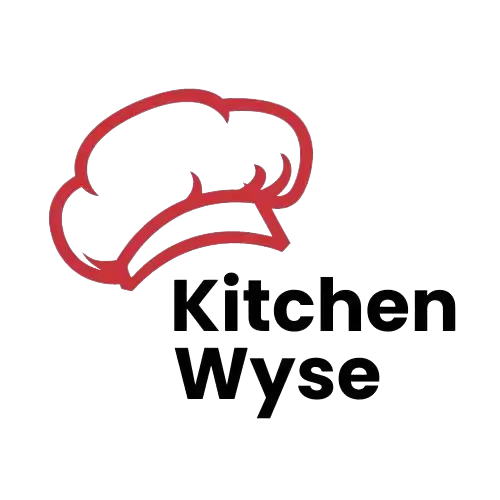Open vs Closed Kitchen Cabinets: Which Style Is Right for You?
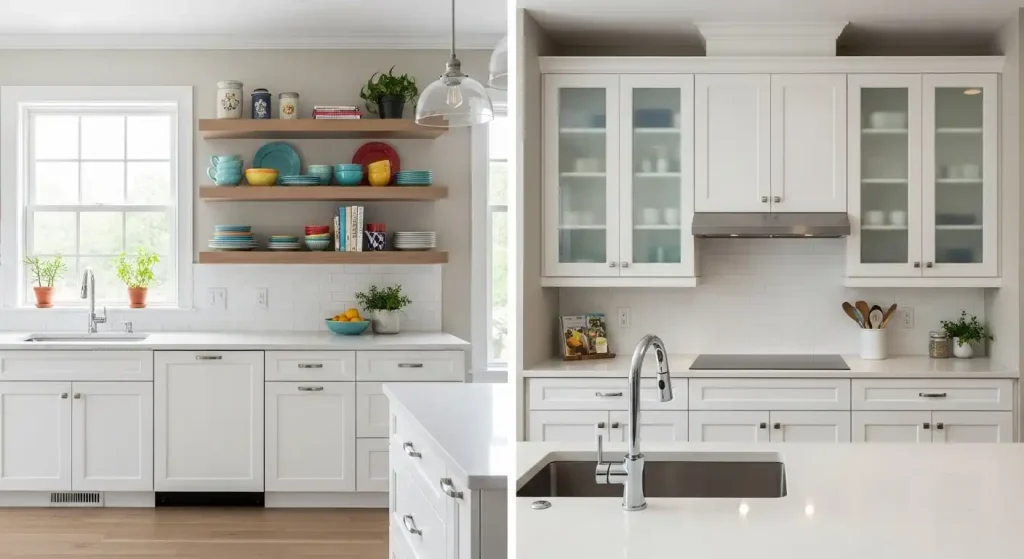
When it comes to designing or remodeling a kitchen, the choice of cabinetry plays a huge role in both style and functionality.
Cabinets are not just storage—they set the tone for the entire space.
One of the most common debates homeowners face is open vs closed kitchen cabinets.
Should you embrace the airy, modern feel of open shelving, or stick with the classic, practical appeal of closed cabinetry?
In this post, we’ll walk through the pros, cons, and design considerations of each option so you can decide which fits your lifestyle and kitchen goals best.
What Are Open Kitchen Cabinets?
Open kitchen cabinets, often referred to as open shelving, replace traditional cabinet doors with exposed shelves.
Instead of hiding your dishes, glassware, or pantry items, everything is on display.
This style has grown in popularity thanks to its modern, minimalist look.
It works especially well in smaller kitchens where open shelves can make the room feel larger and less confined.
What Are Closed Kitchen Cabinets?
Closed cabinets are the traditional option most of us are familiar with.
They feature doors—either solid wood, glass-front, or a mix—that conceal the contents inside.
They’re timeless, versatile, and available in countless finishes and styles, from sleek modern designs to cozy farmhouse looks.
Closed cabinets remain the go-to choice for homeowners who value storage and organization without the visual clutter.
The Case for Open Kitchen Cabinets
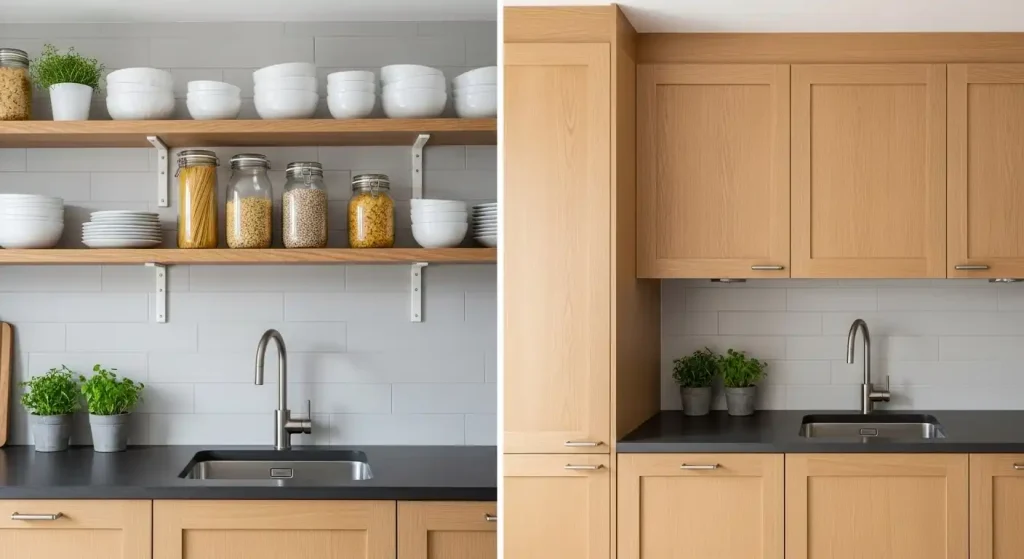
1. Airy and Spacious Feel
Open shelving creates the illusion of more space. By removing bulky doors, your kitchen feels brighter and more open.
This is especially useful in smaller kitchens or galley layouts where every inch counts.
2. Easy Access
With open cabinets, everything is within reach. No more opening and closing doors—your dishes, spices, or mugs are ready to grab.
It’s a functional choice for busy households where convenience matters.
3. Stylish Display
Open cabinets let you showcase your personality. Whether it’s colorful dishware, vintage glassware, or cookbooks, they double as a design feature.
Pairing them with glass cabinet display ideas can elevate the look even further.
4. Budget-Friendly
Open shelving can be less expensive than traditional cabinetry since fewer materials and hardware are required.
This makes it an attractive choice for budget-conscious remodels.
Downsides of Open Cabinets
While open cabinets have their charm, they do come with drawbacks:
- Dust and grease buildup: Without doors, items are exposed to kitchen grime.
- Visual clutter: Unless you’re highly organized, open shelving can make the kitchen look messy.
- Limited storage: They’re great for display but not ideal for hiding bulkier items.
The Case for Closed Kitchen Cabinets
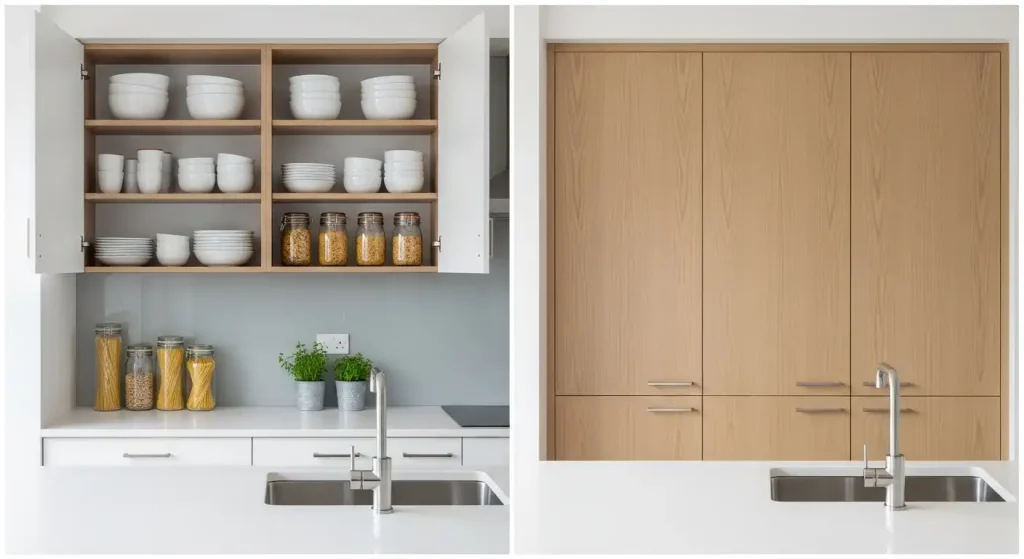
1. Maximum Storage
Closed cabinets allow you to store everything from small appliances to pantry goods out of sight.
This is especially helpful if you have a busy household and need to keep countertops clutter-free.
2. Clean and Organized Look
Closed doors instantly make your kitchen look tidy—even if the inside isn’t perfectly arranged.
It’s a lifesaver for anyone who doesn’t want to constantly curate their shelves.
3. Timeless Appeal
Closed cabinetry never goes out of style.
Whether you choose evergreen cabinet color combinations like cream and honey or bold modern shades, closed cabinets adapt to any design trend.
4. Protection for Your Items
Doors protect dishes, glasses, and food items from dust, grease, and accidental bumps.
Downsides of Closed Cabinets
- Can feel heavy: In smaller kitchens, a wall of closed cabinets may make the space feel darker or cramped.
- More expensive: Full cabinetry with doors, hardware, and finishes tends to cost more.
- Less personality: Without open shelves, there’s less opportunity to display decorative items.
Finding the Right Balance: Mixing Open and Closed
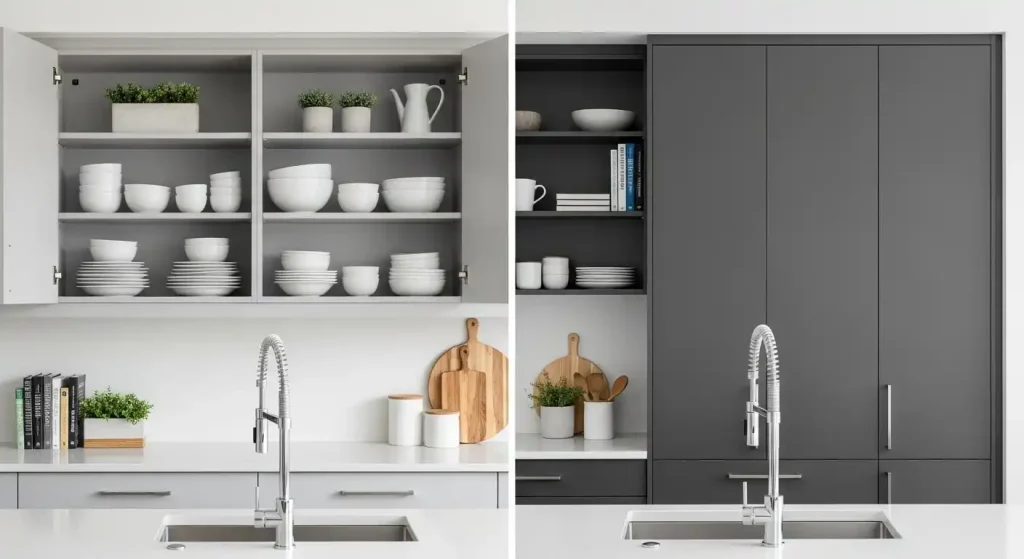
The good news is you don’t have to choose one or the other.
Many modern kitchens blend open and closed cabinetry for the best of both worlds.
For example:
- Use closed cabinets for bulk storage and less attractive items.
- Add a few open shelves for everyday dishes or decorative pieces.
This hybrid approach creates balance—functionality with a touch of style.
Design Tips for Open vs Closed Kitchen Cabinets
1. Consider Your Lifestyle
If you’re a neat freak who loves styling shelves, open cabinets may be perfect. But if you prefer a low-maintenance kitchen, closed cabinets will save you stress.
2. Think About Kitchen Size
Smaller kitchens benefit from open shelving to avoid feeling boxed in. Larger kitchens can handle more closed cabinetry without overwhelming the space.
3. Match with Your Color Scheme
Both open and closed cabinets can be customized with paint, finishes, and hardware. For inspiration, explore:
4. Coordinate with Flooring
Cabinet choices should flow with your flooring. For example, if you’re working with wood tones, check out:
- Kitchen flooring ideas with brown cabinets
- Flooring ideas with cream cabinets
- Flooring ideas with dark cabinets
5. Add Personality with Hardware
Whether you go open or closed, hardware makes a huge difference. Brass, matte black, or chrome pulls can transform the overall look.
Pairing the right hardware with black appliances or wood tones can create a cohesive design.
When to Choose Open Cabinets
- You want a modern, airy kitchen.
- You’re proud of your dishware and want to display it.
- You’re working with a smaller space and want it to feel larger.
- You’re on a tighter budget.
When to Choose Closed Cabinets
- You need maximum storage and organization.
- You prefer a low-maintenance kitchen.
- You want a timeless, versatile design.
- You have a larger kitchen that can handle the visual weight.
Real-Life Examples
- A small coastal kitchen might feature open shelving painted in a light color, paired with blue kitchen islands for contrast.
- A large farmhouse kitchen could use closed cabinetry in warm tones, complemented by oak cabinet color ideas for a rustic charm.
- A modern loft might combine sleek, closed cabinets with a few open shelves for cookbooks and décor.
Final Thoughts: Open vs Closed Kitchen Cabinets
The decision between open vs closed kitchen cabinets comes down to lifestyle, space, and personal style.
If you love a clean, minimalist look and don’t mind a little extra upkeep, open cabinets can be a stunning choice. If you value storage, organization, and timeless appeal, closed cabinets are hard to beat.
For many homeowners, a mix of both creates the perfect balance—functional yet stylish, practical yet personal.
No matter which you choose, remember that cabinets are just one part of the bigger picture. Coordinating with flooring, wall colors, and hardware ensures your kitchen feels cohesive and inviting.
